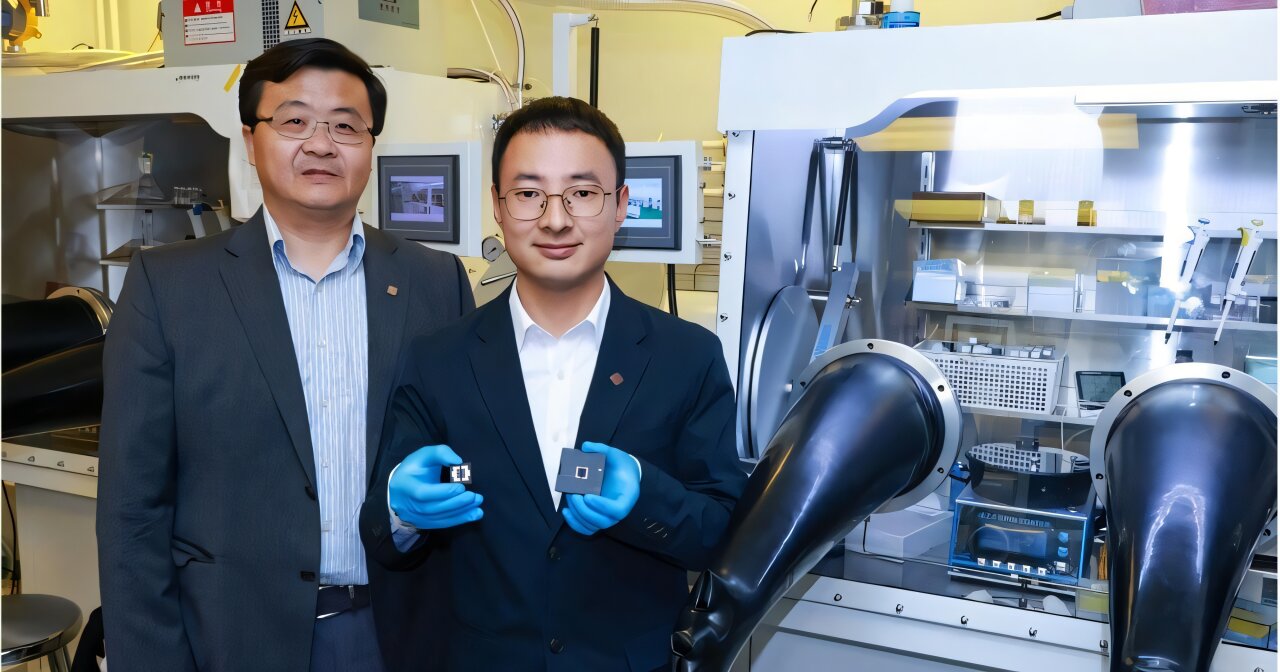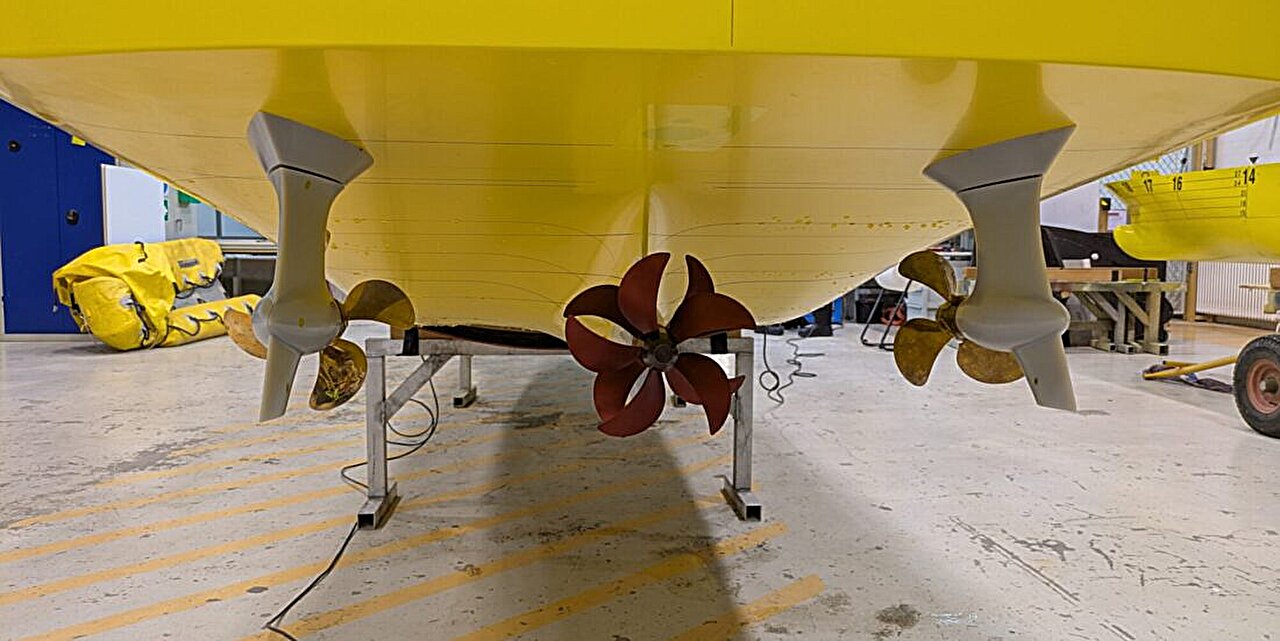Tech
Save $36 on a Cool, Compact Hall Effect Keyboard

Looking for a compact keyboard with a unique twist? The Keychron Q1 HE (9/10, WIRED Recommends) is currently marked down over $35 on Amazon, and comes with Hall Effect switches, a rare offering that adds a ton of functionality to your keyboard.
Think of a keyboard switch like light switches. They have a fixed point where they activate, and all they can report is whether they’re in one of two states. Hall effect switches are more like light dimmer knobs. They know exactly where they currently are and can report that information back to the computer, which has a number of advantages over traditional keyboard switches.
For starters, you don’t have to settle for a fixed actuation point like you do on most keyboards. You can use the software to set the keys to be super sensitive, or require them to be almost all the way down, or even set keys to send different button presses depending on how hard they’re pressed. If you like to play video games, you can set keys to act like an analog joystick or trigger, letting you easily steer in racing games or walk in RPGs without picking up a controller.
The software has a lot of options, but is well thought out and easy to use, although you do need to plug it in to make changes. It’s QMK-based, but Keychron provides their own web-based launcher to make things even easier, particularly if you’re not well versed in that customization software.
It’s a premium mechanical keyboard throughout. The switches themselves are made by Gateron, and our reviewer noted that they’re exceptionally smooth, thanks to the pre-lubed rails and magnetic sensor. The gasket mount design and full aluminum body work together to provide a soft, deep, typing experience. Unless you’re already using linear switches, you might miss some of the crispness and feedback you get from a tactile or clicky mechanical switch.
While the larger Keychron Q6 HE currently sits at the top of our list of favorite mechanical keyboards, if you don’t need the num pad, you might appreciate the extra desk space you can reclaim with the Q1 HE. They’re otherwise extremely similar boards, and you’ll save $50 in the process.
Tech
Save With Vitamix Promo Codes and Deals This Month

I’ve been hooked on smoothies in an almost superstitious way ever since college: A fruit smoothie is like a good luck charm, promising the health you feel you deserve despite all your other bad decisions. But in my more recent adult life, a good blender is the passport to taqueria salsas, Oaxacan-style mole, and all the delicate emulsions I once had to buy at restaurants and in jars.
Well, Vitamix crushes the blender game, but usually comes with a price tag to match. Luckily Vitamix promo codes crop up at various points during the year, and we’re here to help you stay up to date on those discounts.
Vitamix New Ascent X5 With Stainless Steel Container
Vitmix’s top-of-the-line blender model, Ascent X5, is now constructed with a stainless steel container. The 48-ounce stainless steel container is not only huge and hygienic, the machine itself combines an intuitive touch interface with a refined, timeless design. The non-reactive stainless steel material resists stains, odors, and corrosion, and expertly handles hot, cold, and acidic ingredients. This futuristic gadget also has an automatic self-cleaning program and ten blending programs for popular items like smoothies, soups, frozen cocktails and more for a precise blend, every time.
Get a $25 Vitamix Promo Code Plus Free Shipping
Vitamix has tons of ways to save on these handy kitchen gear items, including $25 off when you register your email. All you have to do is input your email on Vitamix’s website, and you’ll get a discount of up to $25 sent straight to your inbox. Plus, you’ll get free shipping on orders of $100 or more.
Does Vitamix Offer Free Shipping?
Glad you asked. Vitamix is offering free standard shipping for orders above $99. This pretty much means that ground shipping is free for blenders at the current discounts. Priority shipping is not free, however.
The WIRED Gear Team’s Favorite Vitamix Blenders
WIRED has long been singing the praises of the classic Vitamix 5200. The model made a blender convert out of contributing reviewer Joe Ray after he realized that the “model of preference for blender aficionados around the world” was also his key to home mole and Oaxacan-style cookery.
A similar road-to-Damascus moment beset WIRED contributing reviewer Heather Arndt Anderson when she tested the Vitamix Ascent X2, also currently on a $50 promo discount. “The more I thought about it,” she wrote, “the more I realized that maybe I’ve never been a blender person because I never had a good blender.” Anderson also made a big batch of mole and avoided passing out from chile fumes, then moved on to homemade masa and a Georgian walnut spread. She regretted only that the blender wasn’t easier to clean.
After testing through a number of brands’ blenders, WIRED contributing reviewer Emily Peck marveled that even the basic Vitamix Explorian E310 churned almonds frictionlessly into butter without even need of a presoak.
Additional Vitamix Deals and Sales in 2025
Vitamix tends to offer a number of other deals and sales throughout the year, like Presidents Day, but the next one won’t crop up till Mother’s Day. Other deals to expect crop up during the summer, alongside the eternal Black Friday and Cyber Monday Deals.
Tech
Research drives commercialization of energy-efficient solar cell technology toward 40% efficiency milestone

Third-generation solar cell technology is advancing rapidly. An engineering research team at The Hong Kong Polytechnic University (PolyU) has achieved a breakthrough in the field of perovskite/silicon tandem solar cells (TSCs), focusing on addressing challenges that include improving efficiency, stability and scalability.
The team has conducted a comprehensive analysis of TSC performance and provided strategic recommendations, which aim to raise the energy conversion efficiency of this new type of solar cell from the current maximum of approximately 34% to about 40%.
The team hopes to accelerate the commercialization of perovskite/silicon TSCs through industry-academia-research collaboration, while aligning with the nation’s strategic plan of carbon peaking and neutrality and promoting the development of innovative technologies such as artificial intelligence through renewable energy.
The research team comprises leading scholars including Prof. Li Gang, Chair Professor of Energy Conversion Technology and Sir Sze-yuen Chung Endowed Professor in Renewable Energy, and Prof. Yang Guang, Assistant Professor, both of the PolyU Department of Electrical and Electronic Engineering.
They conducted a critical review of the challenges and future prospects of perovskite/silicon TSCs titled “Towards efficient, scalable and stable perovskite/silicon tandem solar cells,” which has been published in the journal Nature Photonics.
Tackling stability and manufacturing challenges
“While lab-scale devices have shown impressive efficiency advancement, further efforts are needed to improve their reliability, including minimizing efficiency losses from small-area devices to large-area modules,” said Prof. Gang. “Special focus should also be given to ensuring that the manufacturability of materials and methods aligns with industrial standards.”
To address these issues, Prof. Guang and the team highlighted several critical technical challenges. First, the intrinsic instability of perovskite materials under environmental stresses such as moisture, oxygen, ultraviolet light and thermal fluctuations remains a major challenge. Second, translating tandem devices to commercial-scale modules requires overcoming hurdles related to uniformity, defect control and large-area fabrication.
Although preliminary outdoor testing of perovskite/silicon TSCs has been conducted, certified data on their long-term reliability remain scarce. To better assess the actual lifetime and commercial potential of these cells, the researchers recommend rigorous accelerated stability testing based on standardized procedures outlined by the International Electrotechnical Commission.
Additionally, while perovskite raw materials are relatively low-cost, the use of rare elements and heavy metal lead in most cell designs raises significant environmental and regulatory concerns. The research therefore advocates for the development of sustainable alternatives, along with efficient recycling or lead sequestration strategies to enable viable commercialization.
Promoting industry-academia-research collaboration
The PolyU team advocates for industry-academia-research collaboration through a multidisciplinary approach that integrates material science, device engineering and economic modeling to advance this promising photovoltaic technology. “The development of efficient and reliable perovskite/silicon TSCs must address these remaining scientific challenges to achieve lower levelized electricity costs,” said Prof. Guang.
“The team hopes this research will facilitate the transition of the technology from laboratory studies to commercial fabrication, while closely aligning with the nation’s strategic plan of carbon peaking and neutrality. By providing a stable supply of high-efficiency renewable energy, we aim to deliver green and reliable power support for high-energy-consuming industries such as artificial intelligence, thereby helping to achieve a low-carbon transformation of the energy structure.”
More information:
Guang Yang et al, Towards efficient, scalable and stable perovskite/silicon tandem solar cells, Nature Photonics (2025). DOI: 10.1038/s41566-025-01732-y
Citation:
Research drives commercialization of energy-efficient solar cell technology toward 40% efficiency milestone (2025, November 10)
retrieved 10 November 2025
from https://techxplore.com/news/2025-11-commercialization-energy-efficient-solar-cell.html
This document is subject to copyright. Apart from any fair dealing for the purpose of private study or research, no
part may be reproduced without the written permission. The content is provided for information purposes only.
Tech
This is how two contra-rotating propellers can make ships more energy efficient

By using two propellers that rotate in opposite directions, a ship can use less energy to move forward. New knowledge means that more ships can use the technology, including Hurtigruten’s Sea Zero project for its coastal cruise ships.
SINTEF has now designed and manufactured new measuring equipment for model testing of contra-rotating propellers. This could be good news for many large ships.
“We see that propulsion efficiency increases when we utilize some of the energy lost from the front propeller at the same time as the rear propeller gets better water flow. This can provide more than 10% better efficiency compared to conventional propellers,” says Øyvind Rabliås, a researcher at SINTEF.
Although contra-rotating propellers are not new, they are still rarely used on commercial ships. The reason has been their cost and more complicated design than traditional layouts. That may be changing now.
“Together with our research partners, we’ve spent a lot of time on understanding and developing solutions for this. Now we believe that the technology is mature and ready for wider use,” says Jahn Terje Johannessen. He is a senior hydrodynamicist at Brunvoll, a leading provider of propulsion and maneuvering systems.
Good test results
SINTEF’s new measurement system was developed when Hurtigruten decided to use contra-rotating propellers for its zero-emission cruise ship in the Sea Zero project. The goal is an emission-free Hurtigruten ship with a sustainable and circular solution by 2030.
Contra-rotating propellers have significantly better efficiency than today’s propeller systems.
“This design simply means that we need less energy to achieve the same speed compared to conventional propellers. Brunvoll’s design is also more efficient than the contra-rotating propellers that exist today,” says Gerry Larsson-Fedde, chief operating officer at Hurtigruten.
From drawing board to reality
A broad interdisciplinary team at SINTEF Ocean, from technicians and instrumentation engineers to design experts and researchers, has developed the new measuring equipment for model testing contra-rotating propellers. Together, they arrived at a solution that is well suited for self-propulsion tests.
Two dynamometers, which are instruments used to measure force in rotating systems, have also been developed.
“One version is suitable for integrating into ship models that are tested in the Towing Tank, meaning that it is built into the model, and the other version is used in open water tests and in cavitation tests,” says Rabliås.
The system has already tested Brunvoll’s propeller system for Hurtigruten. The results provided valuable insight into the system’s performance and helped identify the most efficient propulsion solution for further development.
“It was an added bonus for Brunvoll that the project is so versatile. We have a lot of different industrially relevant issues in our work to create a demonstrator,” says Johannessen.

Hurtigruten is also very pleased to have its ground-breaking ship tested.
“It’s fantastic for us that we can test all the parts of the Sea Zero design at such a professional and advanced laboratory as SINTEF has. Contra-rotating propellers are new to us, and they are not common on ships either. That’s why it is so important for us to be able to thoroughly test the ship design in the cavitation tunnel. Then we’ll know that it will work in practice,” says Larsson-Fedde.
Some challenges too
Propulsion efficiency is increased by recovering part of the energy loss from the front propeller and by better inflow to the rear propeller. That is why it is possible to achieve more than a 10% increase compared to conventional propellers. However, contra-rotating propellers require a complex shaft-in-shaft system.
“The design process is also more complicated than for conventional propellers, both because of complex flow phenomena and the larger number of parameters that need to be adjusted, compared to one propeller. This applies to both the diameter ratio and the propeller’s revolution ratio between the two propellers, for example,” says Rabliås.
It will be exciting to follow the developments in the future for Hurtigruten as well.
“The goal of Sea Zero is to design the world’s most energy-efficient ship, and in that quest we have to leave no stone unturned. The propulsion itself uses a lot of energy, and so contra-rotating propellers are very exciting for us to look at,” says Larsson-Fedde.
Citation:
This is how two contra-rotating propellers can make ships more energy efficient (2025, November 10)
retrieved 10 November 2025
from https://techxplore.com/news/2025-11-contra-rotating-propellers-ships-energy.html
This document is subject to copyright. Apart from any fair dealing for the purpose of private study or research, no
part may be reproduced without the written permission. The content is provided for information purposes only.
-

 Politics1 week ago
Politics1 week agoPolitical violence kills almost 300 since Hasina’s fall: rights group
-

 Sports1 week ago
Sports1 week agoPakistani runners make their mark at Istanbul Marathon
-

 Entertainment1 week ago
Entertainment1 week agoPresident Zardari to attend Second World Summit for Social Development in Doha
-

 Politics1 week ago
Politics1 week agoIran vows to rebuild nuclear sites ‘stronger than before’
-

 Tech1 week ago
Tech1 week agoLive TV Isn’t Dead. These Are the Best Live TV Streaming Services
-

 Entertainment1 week ago
Entertainment1 week agoGeorge Clooney on “Jay Kelly,” fame and family
-

 Sports1 week ago
Sports1 week agoDyche fumes at Man Utd goal, calls for VAR change
-
Sports1 week ago
Lamar Jackson, the point spread and the perils of NFL injury reporting

















